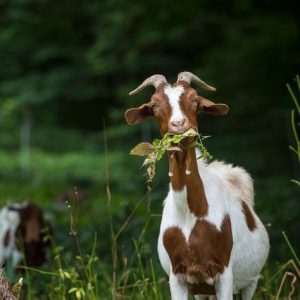Goat farming, known as caprine farming, is a rewarding venture that comes with its unique set of challenges. From disease management to market fluctuations, goat farmers must navigate various obstacles to ensure the success and sustainability of their operations. Here, we explore some common challenges faced by goat farmers and practical strategies to overcome them.
Challenge 1: Disease Management and Health Issues
One of the most significant challenges in goat farming is disease management. Goats are susceptible to various illnesses and parasites, which can quickly spread and impact the entire herd. Common diseases include pneumonia, foot rot, and parasites like worms.
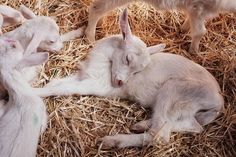
Solution: Establish a relationship with a knowledgeable veterinarian for regular veterinary care, vaccination schedules, deworming treatments, and general health management. Implement quarantine and isolation procedures for new and sick goats to prevent disease spread. Maintain cleanliness and hygiene in living conditions, with proper ventilation and regular sanitization of feeding and watering areas to reduce disease risk.
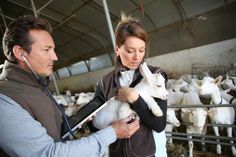
Challenge 2: Feeding and Nutrition
Proper nutrition is crucial for the health and productivity of goats. Inadequate or improper feeding can lead to stunted growth, reduced milk production (in dairy goats), and overall poor health.
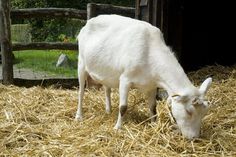
Solution: Consult with a livestock nutritionist to develop a balanced diet plan tailored to your goats’ age, breed, and purpose (meat, milk, or fiber production). Ensure continuous access to clean, fresh water, and provide necessary mineral supplements, especially in regions where soil deficiencies may affect forage nutritional content.
Challenge 3: Predators and Security
Goats are vulnerable to predators such as coyotes, wolves, dogs, and even large birds of prey. Predation can cause stress to the herd and result in significant losses.

Solution: Invest in secure fencing that is tall enough to deter predators and buried underground to prevent digging. Consider using livestock guardian dogs (LGDs) or other suitable guard animals like donkeys or llamas to protect the herd. House goats in secure enclosures at night to minimize exposure to nocturnal predators.
Before we proceed, you should note that our company can help you to start by giving you all the necessary information you need to get started if not yet in the business. Please check our online shop, we have all the standard business proposals for different capacities at very a cheap price made by the best agricultural specialists as well as Standard design plans that are made by the best agricultural architects around the globe. please visit our online shop now using the links below to witness by yourself
Design plans (FARM HOUSE DESIGNS – Kimd Construction & Farm Consultants)
Business plans (BUSINESS PLANS & PROPOSALS – Kimd Construction & Farm Consultants)
Welcome back from visiting our shop, hope you have placed your order for any of our products or you can place it after navigating more of our informative articles.
So let us continue with the article!
Challenge 4: Market Volatility and Pricing
The market for goat products (meat, milk, and fiber) can be volatile, influenced by factors such as seasonal demand, economic conditions, and competition.
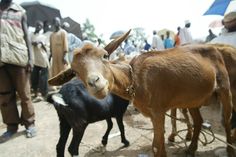
Solution: Diversify your product offerings (e.g., meat, milk, cheese) to mitigate risks associated with fluctuating market prices. Stay informed about market trends and consumer preferences, and establish relationships with potential buyers such as local markets, restaurants, or artisanal cheese producers. Explore opportunities to create value-added products (e.g., goat milk soap, gourmet cheeses) that can command higher prices and attract niche markets.
Challenge 5: Managing Reproduction and Breeding
Efficient reproduction and breeding management are essential for maintaining a productive herd and achieving desired genetic traits.
Solution: Implement a breeding schedule based on your production goals and the reproductive cycle of goats. Select breeding stock carefully to improve desirable traits such as milk production, meat quality, or disease resistance. Monitor the health of breeding goats closely to ensure optimal fertility and reproductive success.
Challenge 6: Financial Management and Sustainability
Sustainable goat farming requires careful financial planning to cover operational costs, investments in infrastructure, and unexpected expenses.

Solution: Develop a comprehensive budget that accounts for feed costs, veterinary care, equipment, and potential emergencies. Consider seeking financial advice or participating in agricultural extension programs that offer support and resources for small-scale farmers. Explore additional income streams such as agritourism, educational workshops, or selling goat-related products (e.g., manure as fertilizer).
Conclusion
While goat farming presents its share of challenges, proactive management strategies and a commitment to best practices can significantly mitigate these obstacles. By focusing on disease prevention, nutrition, security measures, market awareness, breeding management, and financial sustainability, goat farmers can enhance their operations’ resilience and profitability. With dedication and informed decision-making, navigating the challenges of goat farming can lead to a rewarding and sustainable agricultural enterprise.


